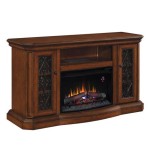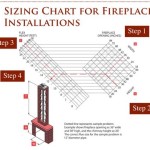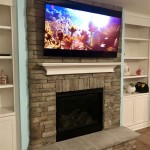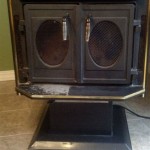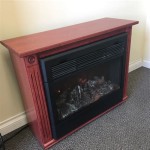Can a Fireplace Flue Be Repaired In Georgia?
Fireplace flues, the essential components responsible for venting combustion gases from a fireplace to the outside atmosphere, are subject to deterioration and damage over time. Georgia's climate, characterized by periods of high humidity and temperature fluctuations, can exacerbate these issues. The question of whether a fireplace flue can be repaired instead of completely replaced is a common one for homeowners in Georgia. The answer depends on several factors, including the type and extent of the damage, the age and construction of the flue, and local building codes.
Understanding the construction and function of a fireplace flue is crucial before considering repair options. A flue typically consists of a liner, which can be made of clay tiles, metal, or cast-in-place concrete. This liner protects the surrounding masonry from the high temperatures and corrosive byproducts of combustion. The flue is also part of a larger chimney system that includes the smoke chamber, damper, and chimney cap. Damage to any of these components can affect the overall performance and safety of the flue.
The need for flue repair or replacement is determined by a professional chimney inspection. Certified chimney sweeps conduct thorough inspections using specialized equipment, such as video cameras, to assess the condition of the flue's interior. These inspections identify cracks, gaps, spalling (surface deterioration), and other forms of damage that can compromise the flue's integrity. The National Fire Protection Association (NFPA) Standard 211 provides guidelines for chimney inspections and maintenance, which are widely followed in Georgia.
Determining the Extent of Damage
The first step in assessing the viability of flue repair is to determine the extent of the damage. Minor cracks and gaps may be repairable, while more extensive damage may necessitate a complete flue replacement. Cracks, particularly those that are wider than 1/8 inch, can allow harmful gases such as carbon monoxide to leak into the home. Spalling, caused by moisture penetration and freeze-thaw cycles, can weaken the flue structure and create fire hazards. Gaps between flue tiles can also allow heat to transfer to combustible materials, potentially leading to a chimney fire.
A Level II chimney inspection, which involves a more in-depth examination of the flue's interior, is often required to accurately assess the extent of the damage. This type of inspection is recommended when there has been a chimney fire, a change in fuel type, or when the homeowner is buying or selling a property. A Level II inspection can identify hidden damage and potential safety hazards that may not be visible during a standard Level I inspection.
If the damage is localized and relatively minor, repair options may be feasible. However, if the damage is widespread or affects a significant portion of the flue, replacement is usually the more prudent and cost-effective solution in the long run. Repairing a severely damaged flue may only provide a temporary fix, and the underlying problems could resurface, leading to further deterioration and safety risks.
Common Fireplace Flue Repair Methods in Georgia
Several repair methods are commonly employed in Georgia to address damaged fireplace flues. The specific method used depends on the type and extent of the damage, as well as the construction of the chimney. One common repair technique is the use of flue liners. These liners are typically made of stainless steel or aluminum and are inserted into the existing flue to create a new, airtight barrier. Flue liners are particularly effective for repairing cracked or deteriorated clay tile flues.
Another repair method involves the application of a heat-resistant sealant or coating to the interior of the flue. These sealants are designed to fill cracks and gaps, preventing gases from escaping and protecting the flue structure from further damage. However, this method is generally only suitable for minor repairs and may not be effective for addressing more significant structural issues. The lifespan of such sealant repairs can vary depending on the quality of the product and the severity of the flue's condition.
Parging, a process of applying a layer of mortar to the interior of the flue, is another repair option. This technique can help to fill cracks and smooth out rough surfaces, improving the flue's draft and preventing the buildup of creosote. However, parging is not a permanent solution and may need to be reapplied periodically. It is also important to ensure that the mortar used is specifically designed for high-temperature applications.
In some cases, individual flue tiles can be replaced. This involves removing the damaged tiles and replacing them with new ones. However, this can be a labor-intensive and costly process, especially if the flue is difficult to access. It is also important to ensure that the new tiles are properly sized and installed to prevent future problems. The long-term effectiveness of this repair method depends on the condition of the surrounding tiles and the overall stability of the flue structure.
Factors Influencing Repair vs. Replacement Decisions
Several factors influence the decision to repair or replace a fireplace flue. One key consideration is the age of the chimney. Older chimneys are more likely to have extensive damage and may require a complete flue replacement. The type of fuel burned in the fireplace also plays a role. Wood-burning fireplaces tend to produce more creosote than gas fireplaces, which can accelerate the deterioration of the flue. Frequent use of the fireplace can also contribute to premature wear and tear.
The cost of repair versus replacement is another important factor to consider. While repair may seem like the more affordable option in the short term, it may not be the most cost-effective solution in the long run. If the repair is only a temporary fix, the homeowner may end up paying for additional repairs or a complete replacement down the road. It is important to obtain quotes from multiple contractors and compare the costs and benefits of each option.
Local building codes and regulations also play a role in the decision-making process. Georgia has specific requirements for fireplace and chimney construction and maintenance. These codes are designed to ensure the safety of homeowners and prevent fire hazards. Any repair or replacement work must comply with these codes, and the homeowner may need to obtain a building permit before starting the project. A qualified chimney professional can help to navigate these regulations and ensure that the work is done properly.
The presence of asbestos in the chimney is another important consideration. Some older chimneys may contain asbestos-containing materials, which can pose a health risk if disturbed. If asbestos is present, it is important to hire a qualified asbestos abatement contractor to remove the material safely before any repair or replacement work is performed. Failure to properly handle asbestos can result in serious health problems and legal liabilities.
Finally, the homeowner's long-term plans for the property should also be taken into account. If the homeowner plans to sell the property in the near future, a complete flue replacement may be a better investment than a repair, as it can increase the value of the home and provide peace of mind to potential buyers. A properly functioning and code-compliant chimney is an attractive feature for homebuyers and can help to expedite the sale process.
In conclusion, whether a fireplace flue can be repaired in Georgia depends on a variety of factors. A thorough inspection by a qualified chimney professional is essential to assess the extent of the damage and determine the most appropriate course of action. Considering the age of the chimney, the type of fuel burned, local building codes, and the homeowner's long-term plans is crucial to making informed decisions about flue repair or replacement.

Clay Chimney Liner Repair Middle Georgia Sweeps Llc Serving The Greater Central Area Since 1994

Leaking Chimney Repair In Augusta Ga Liner Caps

Chimney Repair Reconstruction Mad Hatter Services

Leaking Chimney Repair In Augusta Ga Liner Caps

Masonry Chimney Repair Care In Jacksonville Fl Florida Georgia

Can Old Chimneys Be Repaired We Love Fire

Pre Fab Chimney Repair Care In Jacksonville Fl Florida Georgia

How Much Does Fireplace Repair Cost On Average

How To Fix A Ed Chimney Flue Vertical Care

Chimney Sweep Repair In Augusta Ga Aiken Sc Inspection
Related Posts

